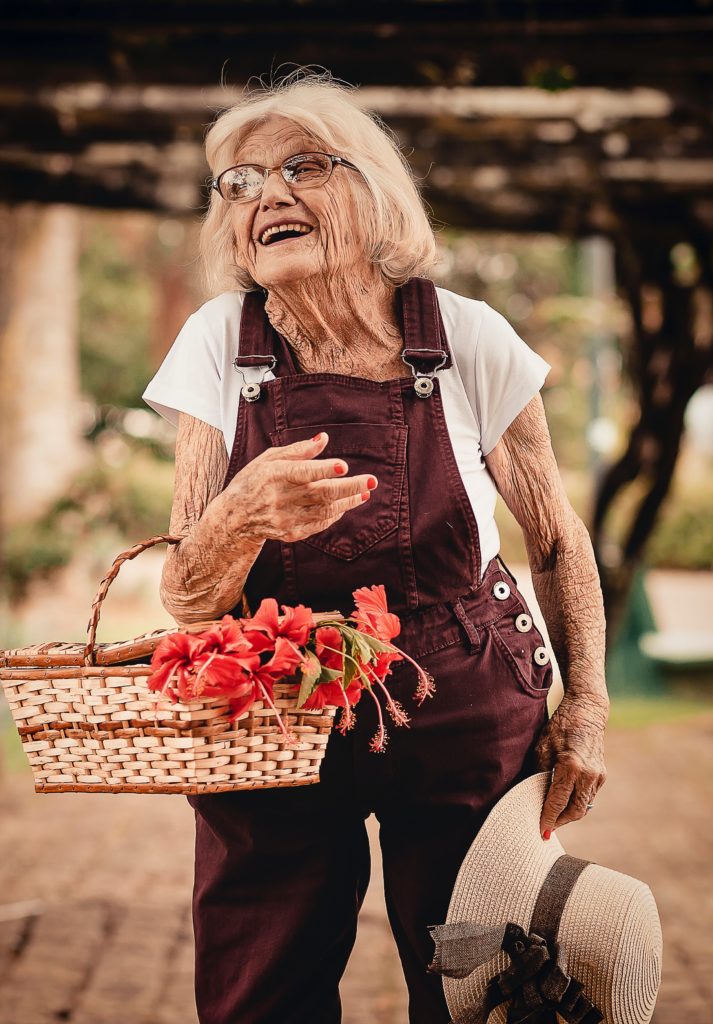
A friend and I were having coffee the other day and comparing our fingers! Yes, that’s right the gnarled joints and sausage sized fingers that have become our ageing hands. We reminisced longingly about the small box of precious rings sitting in the cupboard, rarely worn, because arthritis has twisted our joints into knots of pain. We may be told to honour the wrinkles of ageing and see the beauty of a body that has seen life…. but damn it, arthritis is painful !!! And voila the universe delivers and with a pleasant “ping” an email arrives from Julia Richards, a regular writer, medicinal herbalist and friend who lives in the UK . Here is her excellent article on managing arthritis.
During the colder and wetter months, many people report feeling more pain in their joints be that from the wear and tear osteoarthritis, the autoimmune rheumatoid arthritis, gout, fibromyalgia or psoriatic arthritis. Despite the type, arthritis is an inflammatory condition rather than necessarily an aging condition and the number of younger people suffering from it is increasing. As Inflammation is at the root cause of painful joints, you can do a lot with diet, supplements and lifestyle techniques to reduce it and thus the pain as Dr Susan Blum outlines in her recent book Healing Arthritis and Dr Steven Grundy describes in his book The Plant Paradox . As an herbalist, I add that there many useful herbs too.
First treat the gut
Current science shows strong links between the types of bacteria in your gut and various types of arthritis. Consequently, both Blum and Grundy amongst others agree that to treat joint pain you must first treat the gut. We have numerous immune cells in our gut and they interact with certain species of intestinal bacteria to activate immune responses in different parts of the body, including the joints. Too much of certain types of bacteria will lead to inflammation and thus pain. The overall treatment aim therefore is to get rid of the bad bacteria and re-establish the good bacteria.
Foods to increase in your diet
Daily
- Dark leafy greens like spinach, kale, Swiss chard and purple / blue berries such as blackberries and blueberries. These antioxidant rich foods feed the good microorganisms in your gut keeping it healthy and boosting your immunity.
- Fibre (also known as a prebiotic) at every meal. Prebiotics stimulate the growth of good bacteria. This means fruit and vegetables as the main part of your meal.
- Healthy, high quality oils and fats like olive oil, avocado, nuts (not peanuts) and seeds.
- Add anti-inflammatory herbs and spices to your food such as turmeric, ginger, garlic, cinnamon, cloves, cayenne, sage and rosemary.
- Drink anti-inflammatory herbal teas such nettle, ginger, peppermint, lemon balm, chamomile, rose hips, fennel, green tea and turmeric.
One to two times per week
- Fish because the omega 3 fatty acids reduce inflammation.
- Bone broth based soups and sauces for the collagen. Some research is showing that it may help with osteoarthritis.
- Probiotic foods, think fermented products like sauerkraut, pickled vegetables, tempeh, kimchi, miso, kefir and yoghurt (try to stick to a plant based one). These are good bacteria for your gut.
- Sprinkle some sesame seeds on your salad, cooked vegetables, noodles or have some tahini in sauces, humus or gluten free crackers . Some research is showing these seeds are beneficial for osteoarthritis in the knee due to the anti inflammatory effects of the lignans (sesamin and sesamolin) in them.
Foods to decrease or avoid in in your diet
Common sense will tell you that this includes highly processed foods made with white flour and white sugar. In addition, the following foods can increase inflammation in many people so try cutting them out for about six to eight weeks and see if it makes a difference for you. You can gradually re introduce specific foods one at a time. Your body will let you know if you should remove them again.
- Nightshade vegetables including tomatoes, potatoes, capsicum, eggplant, zucchini. I know, these are tasty but there are so many other vegetables to eat. Personally I try to limit them to once every few weeks.
- Gluten products, that is, anything with wheat, barley and rye. Instead try quinoa, buckwheat, oats and rice. If you must have some bread, go for good quality sour dough as it has prebiotics and probiotic benefits for heathy gut bacteria.
- Dairy products. There are lots of plant based milks, yoghurts and cheese to choose from these days so you won’t feel like you are missing out. I enjoy a mix of almond and coconut milk frothed up in my cappuccino and coconut milk yoghurt on my muesli.
- Red meat as it can cause inflammation so limit your intake and eat more fish and chicken.
Supplements
Supplements proven to decrease inflammation and pain include:
- Omega 3 (EPA and DHA) & Omega 6 (GLA) Fatty acids. These reduce pain and improve physical function in Rheumatoid arthritis and reduce inflammation overall in the body.
- Curcumin is the active chemical in turmeric has been found to reduce pain and stiffness in Osteoarthritis. However, I’ve found some patients are sensitive to it causing digestive issues. These people seem to tolerate whole turmeric, so add this spice to your food where you can. For maximum absorption ensure it’s mixed with a healthy fat such as olive or coconut oil and black pepper.
- Vitamin C reduces pain and oxidative stress in inflamed joints.
- Magnesium quickly moves blood sugar into your muscles and reduces the C-reactive protein (CRP) marker in the body which causes inflammation. For the best absorption make sure you select a supplement with Magnesium citrate, hydroxide and carbonate. It is also useful if it contains calcium, vitamin K2 and vitamin D3, all for bone health.
- Glucosamine is a naturally occurring chemical found in the fluid around your joints. As there are no edible food sources of glucosamine when our bodies don’t make amounts, a supplement is useful.
- Chondroitin is part of our cartilage. Taking it can prevent cartilage breaking down and may stimulate its repair.
- Probiotics improve the balance of good bacteria in your gut and can help with arthritic pain and inflammation throughout the body.
Before taking any supplements please check with your doctor or health professional and for any interactions with medications you may be taking.

Move more
Though it’s tempting not to exercise because of pain, lack of desire and time, stronger muscles do help reduce pain and better flexibility reduces stiffness. Exercise doesn’t need to be strenuous. Simply walking around the block once a day is beneficial. If you can, try a yoga, tai chi or qi gong class for stretching and gentle movement. There are many online classes so you can do these in the comfort of your own home. Dance can also be beneficial as well as fun! Or try any other sport or exercise you can handle. A useful resource is ESCAPE pain offering online exercises to help reduce pain. It is also worthwhile booking an appointment with a physiotherapist who will be able to give you specific exercises for your needs and suggest splints and compression gloves/socks if appropriate for you.
Stress less to reduce pain
Stress affects your gut, immune system and arthritis pain
Ways to destress:
- Learn to say No and not feel guilty about it. Give your body time and space to renew and restore itself. This means not taking on too much so you can do things you really want to do and at a leisurely pace. Simply practice saying “No, I can’t do x because …..[I have another commitment / I need to preserve energy for …. / I’ve already said yes to….] “
- Prioritise sleep. Get all the tips from our previous article Age well by sleeping smarter
- Book a regular bodywork appointment for pain relief and stress reduction such as Swedish / shiatsu massage, acupuncture, craniosacral and myofascial release.
- Start a mindful and / or meditation practice.
Oils and lotions
Add six drops of essential oil to carrier oil (olive, almond, jojoba, coconut) or a cream /gel / lotion and rub onto the affected area. They can also be mixed in with Epsom, Himalayan or sea salt and added to a warm bath. Useful essential oils to boost immunity and reduce inflammation and pain include: Rosemary, Ginger, Basil, Lavender (also helps reduce stress), Eucalyptus, Bay Laurel and Frankincense (may also help with cartilage damage). Self -massage on joints with Turmeric oil or St John’s Wort oil can also be effective at reducing pain and inflammation.
Cryotherapy or cold water
Cold water stimulates norepinephrine, an anti-inflammatory neurotransmitter that decreases pain. It also reduces the inflammatory histamine levels in the blood of those with Rheumatoid Arthritis. For pain in your hands or feet, soak them in cold water for 1-5 minutes daily. For pain in other parts of your body try turning your shower down colder and colder for the last 1-5 minutes.
Make a plan
Use the diet and lifestyle tips here to make a plan for things to add and decrease in your daily life. Give it a try for a few months and see how you feel. We’d love to hear how you get on.
Always seek a qualified Medical Herbalist before using herbs.
Always check how the herb / supplement interacts with any medication you are taking.

Julia Richards is a qualified Medical Herbalist and Director of Enhance One Limited, a consultancy passionate about helping individuals, groups, families, communities and organisations be the best they can be physically, mentally and emotionally. To achieve this, Julia uses a holistic approach to help you enhance yourself by drawing on her experience and studies in personal development, life coaching, aromatherapy, nutrition, herbal medicine and other wellbeing techniques. Julia helps you design a wellbeing plan that is unique to you and works in a complementary way with your doctor or any other therapist you are seeing to help you make improvements in your health. Julia offers individual consultations and group workshops.
